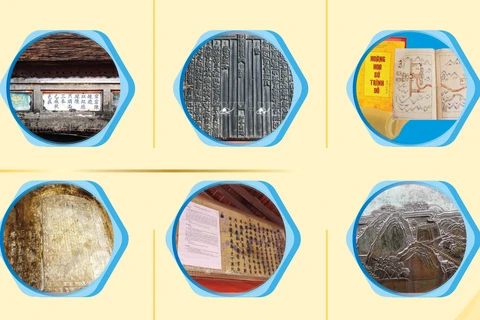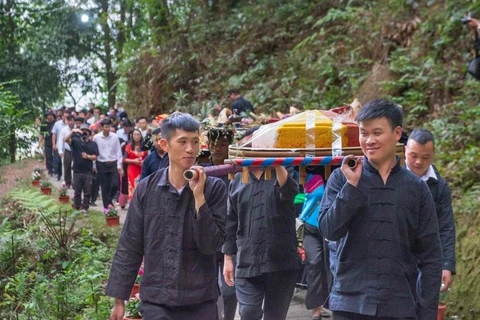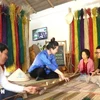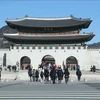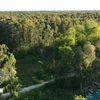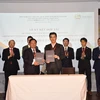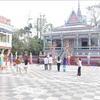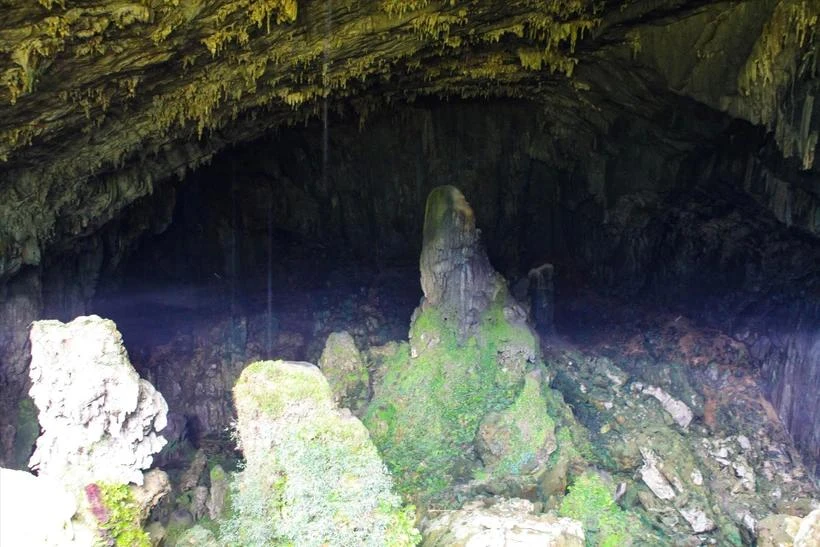
Thanh Hoa (VNA) - Experts gathered at a workshop on April 8 to assess the potential of seeking the United Nations Educational, Scientific and Cultural Organisation (UNESCO)’s recognition for Con Moong Cave in the central province of Thanh Hoa as a world heritage site.
The workshop was jointly held by the provincial Department of Culture, Sports and Tourism, the Institute of Archaeology, and the Vietnam Archaeological Association (VNAA). It focused on evaluating the possibility of determining criteria for the UNESCO recognition of the cave area in Thach Thanh district.
Participants evaluated the outstanding value of the cave and its vicinity based on excavation and research results over the past half-century, which also included recent survey findings.
Experts in various fields from archaeology and heritage to environment and tourism, along with units that have experience in constructing world heritage dossiers discussed features of the cave and its vicinity based on excavation and research results over the past half-century.

The outcomes of the workshop will serve as a scientific foundation for the provincial authorities to present to international advisory experts on the feasibility of the scientific dossier for the Con Moong Cave.
Associate Prof. Dang Van Bai, Vice Chairman of the National Cultural Heritage Council, suggested the local authorities pay more attention to consulting experts from the International Council on Monuments and Sites (ICOMOS).
COMOS's on-site consultancies and inspections are the basis for UNESCO’s World Heritage Committee to issue decisions related to cultural heritage and mixed heritage, he said, adding that Thanh Hoa province needs to build a solid scientific dossier to successfully gain the organisation’s recognition for the Con Moong Cave.
In his conclusion, VNAA Chairman Associate Prof., Dr. Tong Trung Tin said participants shared the view that the cave is likely to satisfy selection criteria regarding cultural and long-term settlement traditions.
He underlined the necessity for the local authorities to establish a provincial steering committee to direct relevant units to coordinate with the Government to develop heritage area documents and dossiers for submission to UNESCO.

Reports presented at the workshop provided objective and accurate information, enabling scientists and experts to discuss the outstanding value of the Con Moong Cave within the system of adjacent heritage sites, as well as the authenticity and integrity of the heritage.
The Con Moong Cave, first excavated by Vietnamese archaeologists in 1976, is located inside Cuc Phuong National Park. Although most of the Cuc Phuong National Park’s area is in Ninh Binh province, the Con Moong Cave locates in Thanh Yen commune in Thach Thanh district of Thanh Hoa province.
The cave is some 40m in length, with openings on both ends. Inside the cave, the ceiling in some places is 10m high.
The heritage area of the Con Moong Cave includes dozens of caves and stones distributed throughout a space of more than 20,000 ha of the Cuc Phuong National Park in Thach Thanh district and some areas in Hoa Binh and Ninh Binh provinces.
By 2008, comprehensive surveys had been conducted, and documentation was prepared for the building of a dossier to seek UNESCO’s world cultural heritage recognition.
From 2010 to 2014, the cave and the surrounding areas were systematically excavated and researched within the framework of a cooperative project between the VNAA, the Vietnam Academy of Social Sciences (VASS), the Institute of Archaeology and Ethnography Novosibirsk branch under the Russian Academy of Sciences, and the Department of Culture, Sports and Tourism of Thanh Hoa province.
The cave has been excavated many times and has been determined to be the oldest site in the country. It contains traces of ancient human settlements that ranged in age from a staggering 60,000 to 70,000 years BC.
The cave is where the ancient Vietnamese people settled, whose three cultures were the Son Vi, Hoa Binh, and the Bac Son. Evidence found here from traditional human settlements indicates they hunted animals, gathered fruits, and farmed rice.
In 2020, the Prime Minister approved a plan to preserve, restore and promote the value of the archaeological relics of Con Moong Cave and surrounding areas with a total area of over 977.5 hectares.
The cave was recognised as a Special National Archaeological Site by the Ministry of Culture, Sports and Tourism in 2015./.
